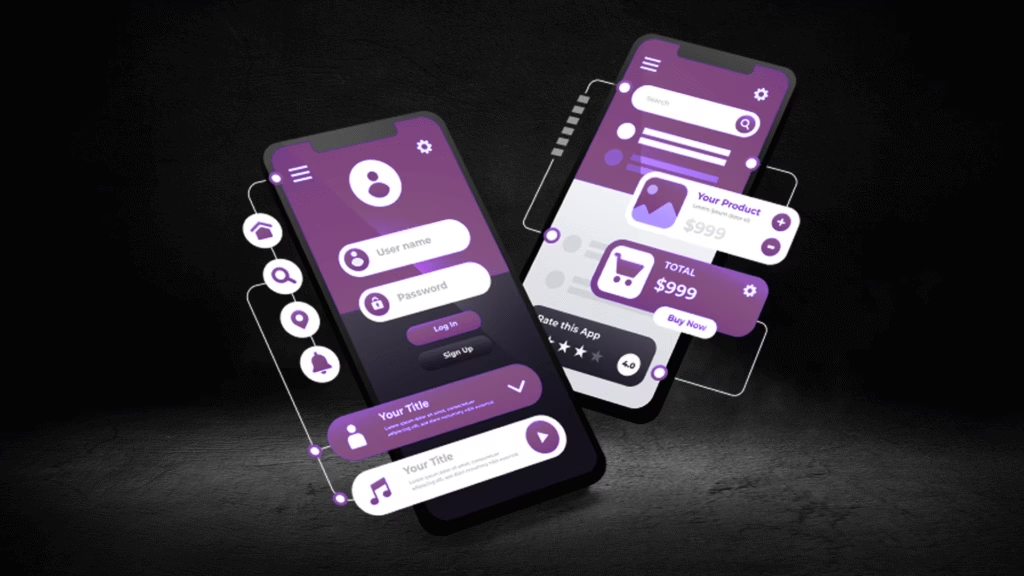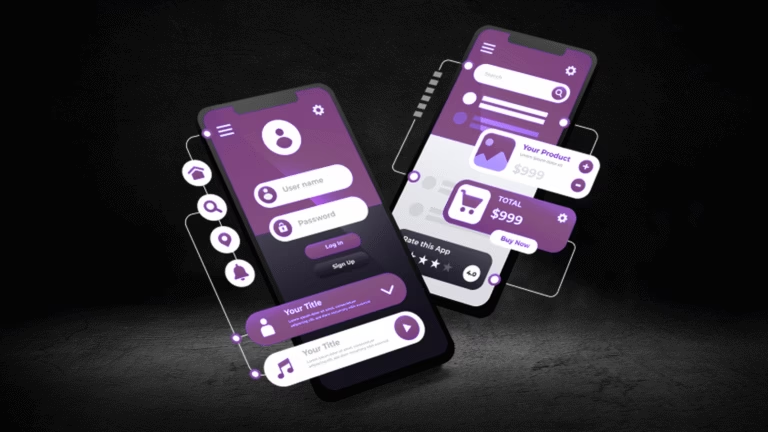One of the most substantial advantages of cross-platform app development is its cost-effectiveness. Companies can save time and resources by hiring fewer developers and implementing a unified solution instead of managing multiple teams for different platforms. This leads to lower overall development costs and a faster return on investment, making it especially appealing for startups and businesses looking to capture a market share without extensive financial commitments.
Additionally, cross-platform development allows for a wider reach when launching mobile applications. Given the dominance of iOS and Android in the market, reaching users across both platforms increases the app’s visibility and potential user base significantly. This broader accessibility not only enhances user engagement but also facilitates user feedback, allowing developers to make informed improvements and updates.
Faster development cycles are another key benefit of adopting cross-platform methodologies. With tools that facilitate simultaneous development for various operating systems, organizations can bring their products to market more rapidly than with traditional native app development methods. Reduced time to market can be critical in a fast-paced industry where consumer preferences and technological advancements are continually evolving.
Current Trends Shaping the Future
As we navigate through 2023, several pivotal trends are shaping the landscape of cross-platform mobile app development. One notable trend is the growing popularity of no-code and low-code development tools. These platforms empower users with minimal programming knowledge to create mobile applications for both iOS and Android effectively. By streamlining the development process, these tools enable faster deployment and iteration, essential for meeting the dynamic needs of users and businesses alike.
Another significant trend is the increasing integration of artificial intelligence (AI) into mobile app development. Developers are leveraging AI technologies to enhance user experiences, personalize content, and optimize functionalities. From chatbots offering instant customer support to predictive analytics that drive user engagement, AI is becoming indispensable in crafting sophisticated applications. This fusion of AI with cross-platform frameworks such as React Native and Flutter not only enriches functionality but also simplifies the development complexities associated with creating apps that function seamlessly on both iOS and Android platforms.
Additionally, the evolution of existing frameworks like React Native and Flutter continues to play a crucial role in the cross-platform development ecosystem. These frameworks provide robust solutions for building high-performance applications, significantly reducing the need for extensive platform-specific coding. The influx of community support and regular updates enhances their capabilities, making them more appealing to developers. As these frameworks advance, they are increasingly capable of integrating native features and performance optimizations, bridging the gap between user experience and development efficiency across different mobile operating systems.
Overall, the combination of low-code tools, AI integration, and the growth of versatile frameworks represents the current directional shift in mobile app development, setting the stage for innovative solutions that cater to the expanding requirements of diverse audiences.
Predicted Technological Advancements by 2025
As we approach 2025, the landscape of cross-platform mobile app development is set to undergo significant technological transformations. These advancements promise to enhance performance, interoperability, and user experience across various devices, including iOS and Android platforms. One of the most critical developments is the optimization of performance capabilities within cross-platform frameworks, which will lead to smoother and faster applications. This optimization will be driven by improvements in coding practices and the introduction of more efficient libraries, enabling developers to create applications that rival native performance.
Additionally, the growing emphasis on cross-platform interoperability will facilitate seamless communication between different operating systems. This trend will see a rise in the use of standardized APIs and tools that ease the process of application development and maintenance, allowing for wider accessibility. Consequently, users will benefit from a unified experience, irrespective of the device they are using, as applications become increasingly compatible with both iOS and Android.
Moreover, the rollout of 5G technology is expected to revolutionize mobile app development. With faster data transmission rates and lower latency, developers can build applications that utilize advanced functionalities, such as real-time data processing, augmented reality, and immersive gaming experiences. This leap in connectivity will enable developers to leverage the full potential of cross-platform development, crafting applications that not only perform efficiently but also deliver rich user experiences. All these advancements will result in a more integrated and versatile app ecosystem, allowing developers to reach wider audiences without compromising on quality or functionality.
The Role of Artificial Intelligence and Machine Learning
As we approach 2025, the intersection of artificial intelligence (AI) and machine learning with cross-platform mobile app development is poised to redefine how applications are built and experienced on both iOS and Android platforms. The increasing capabilities of AI will enable developers to create more personalized user experiences, an expectation that continues to rise among mobile users.
One of the most significant advancements will be the incorporation of predictive analytics. By leveraging machine learning models, mobile apps will gain the ability to analyze user behavior and preferences in real-time. This data-driven approach allows applications to deliver tailor-made content and suggestions, making the user experience not only more engaging but also highly relevant. For instance, an e-commerce app could predict what products a user might want to view based on their previous searches and purchases, effectively enhancing the overall interaction.
Automation is another facet where AI and machine learning will play a crucial role in streamlining the mobile app development process. By automating repetitive tasks such as testing and debugging, developers can save valuable time and focus on creative problem-solving and innovative features. AI-assisted development tools are becoming more sophisticated, enabling developers to build applications optimized for both iOS and Android from a single codebase. This means businesses can implement updates and enhancements more rapidly, ensuring their apps remain competitive in a fast-evolving digital landscape.
Moreover, the incorporation of AI-driven chatbots and virtual assistants will further enrich user engagement within apps. These intelligent systems provide immediate assistance, answering questions, and facilitating transactions, thus enhancing user satisfaction. In conclusion, the synergy between artificial intelligence, machine learning, and cross-platform mobile app development will undoubtedly drive the future of app usage, catering to the diverse needs of global users efficiently and effectively.
The Impact of Augmented Reality and Virtual Reality
As we look towards 2025, the integration of augmented reality (AR) and virtual reality (VR) into mobile app development is poised to revolutionize user engagement across various platforms. These immersive technologies not only enhance the functionality of applications but also create unique experiences that draw users into interactive environments, bridging the gap between the digital and physical worlds.
The significance of AR in cross-platform mobile app development lies in its ability to overlay digital information onto the real environment. For instance, applications that utilize AR can enable users to visualize products in their own spaces before making a purchase, enhancing consumer confidence and reducing the uncertainty associated with online shopping. This tech-driven personalization is expected to captivate users and increase satisfaction in both iOS and Android ecosystems.
On the other hand, VR takes user interaction a step further by constructing completely immersive environments that can transport users to different realms. As VR technology becomes more accessible, developers are likely to create apps that offer training simulations, virtual tours, and gaming experiences that fully engage users, irrespective of whether they are using iOS or Android devices. The cross-platform capabilities of these technologies will ensure that users have a consistent experience, regardless of their chosen mobile operating system.
Furthermore, the potential applications of AR and VR extend to industries such as education, healthcare, and tourism, where students can engage with 3D models, patients can experience therapeutic environments, and travelers can preview destinations through their devices. By 2025, it is expected that the prevalence of these technologies in mobile app development will not only enhance user engagement but also redefine how functionalities are perceived and utilized in cross-platform applications.
Security Challenges and Solutions
As the demand for cross-platform mobile app development continues to surge, the potential security challenges accompanying this trend become increasingly pronounced. With platforms like iOS and Android working in tandem, developers face unique hurdles in safeguarding user data. Cross-platform apps, while offering flexibility and reduced development costs, often encounter vulnerabilities that arise from the shared nature of their codebase. This shared code can create a single point of failure that malicious actors could exploit if proper security measures are not implemented.
One major security concern pertains to data privacy, particularly as regulations such as the General Data Protection Regulation (GDPR) remain a top priority for organizations worldwide. Compliance with such regulations requires robust strategies from developers to ensure that mobile applications collect, store, and process user data securely. Failing to do so could lead to severe penalties and loss of user trust. Therefore, securing sensitive data through encryption and authentication measures must become central to the development process.
To combat these challenges, developers are advised to adopt a multi-layered security approach. Employing techniques such as code obfuscation can effectively hinder unauthorized access to the codebase, while integrating regular security audits helps identify and rectify vulnerabilities promptly. Furthermore, utilizing platform-specific security features enhances defenses against potential threats. For example, iOS has robust mechanisms for handling sensitive information while Android offers various encryption options that can benefit cross-platform apps.
Additionally, advancements in artificial intelligence and machine learning are expected to play a pivotal role in enhancing app security. These technologies could aid in real-time threat detection and response, allowing developers to proactively address vulnerabilities. As we look towards the future of mobile app development, it is imperative that security measures evolve in response to emerging challenges, ensuring that user data remains protected across various platforms.
Case Studies of Successful Cross-Platform Apps
As the demand for mobile applications on both iOS and Android continues to rise, cross-platform app development has emerged as a strategic approach for businesses seeking to reach a wider audience. Analyzing successful cross-platform apps can provide insights into best practices and methodologies that contribute to their effectiveness. A notable example is the social media platform, Facebook, which initially developed its app using the HTML5 framework. This choice allowed for a single codebase that was compatible across both platforms. The decision enabled Facebook to reduce development costs and accelerate its feature rollout, ultimately leading to its dominance in the social media space.
Another exemplary case is Airbnb, which adopted a cross-platform development strategy using React Native. This approach enabled Airbnb to create a seamless user experience by maintaining a consistent look and feel across devices. React Native facilitated rapid development cycles and easier maintenance. The company reported a significant reduction in development time and costs while successfully launching features that catered to both iOS and Android users effectively. Airbnb’s success can largely be attributed to its focus on user experience, rigorous testing, and agile development methodologies.
Furthermore, the financial technology app, Square, exemplifies an effective cross-platform strategy. By leveraging native components for performance-sensitive features alongside a common codebase for other functionalities, Square achieved optimized performance across different mobile operating systems. This hybrid approach ensured that users enjoyed a native-like experience, which is critical for apps in the competitive financial sector. The ability to adapt quickly to user feedback and market changes has proven invaluable for Square, allowing it to maintain relevance and user satisfaction.
These case studies highlight the vital role of meticulous planning and selecting appropriate frameworks in the success of cross-platform app development. By assessing these methodologies, future developers can gain valuable insights that will help them craft successful mobile applications for iOS and Android platforms.
The Exciting Potential of Progressive Web Apps (PWAs)
As mobile app development continues to evolve, Progressive Web Apps (PWAs) have emerged as a significant player in the cross-platform landscape. PWAs blur the line between web and mobile applications, providing a user-friendly experience that can be accessed on both iOS and Android devices without the need for traditional app store downloads. This hybrid approach not only enhances user accessibility but also streamlines development efficiency, making it an attractive option for developers aiming to create scalable mobile solutions.
One of the most notable advantages of PWAs is their ability to function seamlessly across different platforms, offering a consistent experience regardless of the device used. By leveraging modern web technologies such as Service Workers, Web App Manifests, and responsive design, PWAs can deliver performance on par with native mobile apps. This ensures that users experience quick loading times, offline capabilities, and push notifications, features that were once exclusive to native apps. With these capabilities, PWAs cater to the increasing demand for efficient applications that work flawlessly on both iOS and Android systems.
As we look towards 2025, the trend of integrating PWAs into the cross-platform app development framework is likely to gain momentum. Organizations will increasingly adopt PWAs to reach wider audiences while minimizing development costs. The convenience of deploying a single codebase while still maintaining an engaging user interface positions PWAs as a strong candidate for businesses aiming to optimize their mobile strategies. Furthermore, as consumer preferences continue to shift toward web-based solutions that mirror native functionality, the prominence of PWAs in the mobile app development arena is set to increase.
In a rapidly changing technological landscape, the integration of Progressive Web Apps represents an exciting frontier for both developers and users alike. Their potential to merge the best aspects of web and mobile experiences underlines their role in the future of cross-platform app development.
Conclusion: Envisioning Cross-Platform Development in 2025
As we look toward the future of cross-platform app development in 2025, it becomes evident that the landscape is poised for significant transformation. The increasing demand for mobile applications across various devices and operating systems, particularly iOS and Android, necessitates a shift in how developers approach app creation. The trends showcasing advancements in frameworks and tools aimed at streamlining cross-platform development indicate a promising evolution, facilitating a more efficient integration of features suited for diverse user needs.
Developers will need to navigate several challenges in this evolving environment. Ensuring optimal performance and user experience remains paramount, as applications built for multiple platforms must not only function seamlessly but also maintain the high standards expected by users accustomed to native applications. Collaborating with evolving technologies, such as cloud computing and artificial intelligence, will further enable developers to enhance the versatility and functionality of cross-platform applications.
Strategic considerations will play a vital role in shaping the future of mobile app development. Organizations may need to reconsider their development methodologies, opting for agile practices that allow for iterative improvements in response to user feedback across both iOS and Android platforms. Furthermore, investing in cross-platform tools and fostering a culture of continuous learning will equip teams to stay ahead of industry trends, mitigating risks associated with emerging technologies.
Looking ahead, the emphasis on user-centric designs and robust performance metrics will ensure that cross-platform development not only keeps pace with technological advancements but also resonates with the ever-evolving expectations of consumers. As we approach 2025, the potential of cross-platform mobile app development to deliver seamless experiences across devices will be realized, marking a significant milestone in how applications are conceived and executed in the digital realm.








